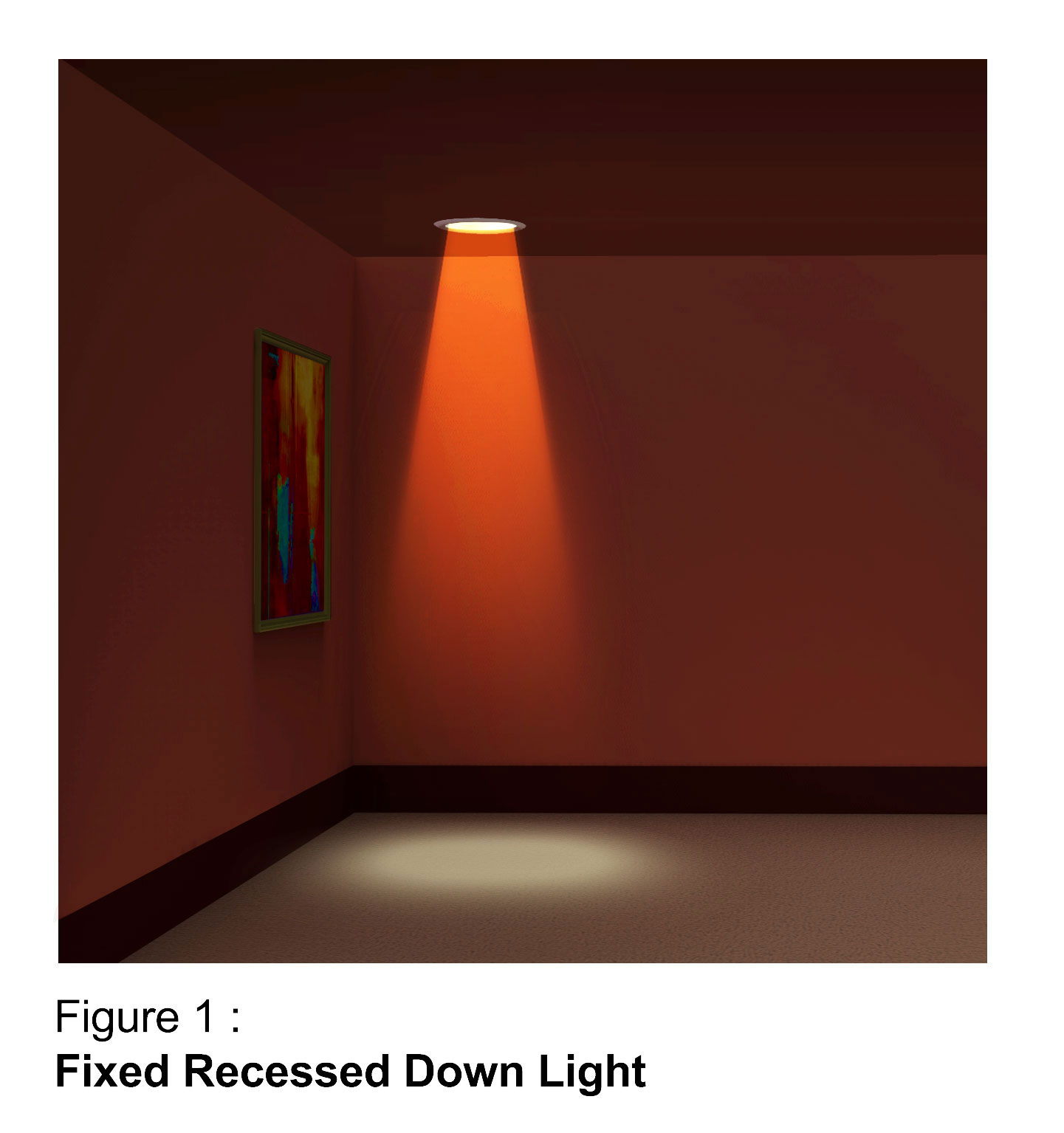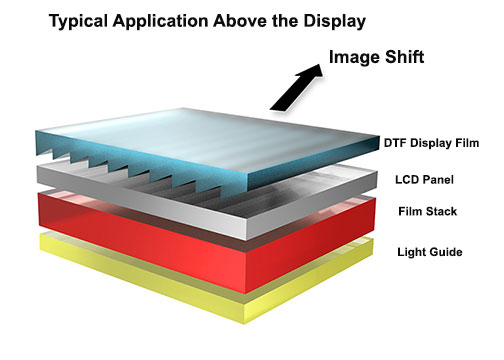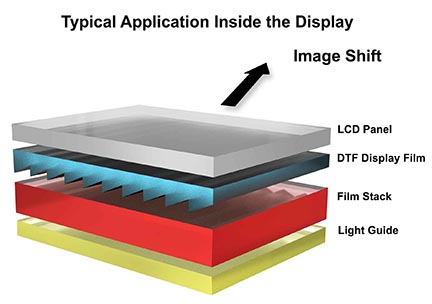Direction Turning Film
Luminit’s Direction Turning Film (DTF) offers a powerful solution for engineers and designers seeking greater control over light beam direction. This film is designed with microscopic, asymmetrical prismatic structures that redirect light without compromising clarity or efficiency.
Optimizing Light Distribution
DTF is especially effective when used with downward recessed lighting, where it can dramatically enhance wall washing capabilities. By redirecting the light beam off-axis—typically at a 20° angle, DTF can illuminate walls, pathways, stairways, or pool bottoms more evenly, increasing both aesthetics and functionality.
Standard DTFs are replicated on 0.010″ polycarbonate (PC) and are designed to work seamlessly with LED light sources that include secondary optics.

Enhanced Display Performance
DTF isn’t just for lighting, it also plays a key role in display systems. It can redirect images generated by flat panel displays to optimize viewing angles. This makes it an ideal solution for avionics displays, where visibility for both the pilot and co-pilot is crucial. DTF can also replace 3M’s Vikuiti™ Image Directing Film II (IDF II), providing similar off-axis image redirection with high optical quality.
When combined with Light Shaping Diffusers® or Luminit’s Round Tip Display film, DTF enhances image uniformity and brightness while preserving clarity.

Key Benefits of Direction Turning Film
Direction turning film can be used in a number of applications across a myriad of industries, including LED architectural lighting, avionics and cockpit displays, traffic signs, and pool/stairway/path lighting. Some key benefits of DTF include:
- Improves wall washing in recessed can lighting
- Reduces glare and enhances visibility in pathway and stairway lighting
- Improves bottom illumination in pool lighting applications
- Seamlessly integrates with LED systems that use secondary optics
- Provides a 20° controlled beam redirection without distortion
- Minimizes the need for changes to existing light fixtures
- Easy to incorporate into both lighting and display stacks





Contact Our Light Shaping Experts
DTF is available in standard 20° versions or can be customized and combined with Luminit’s Light Shaping Diffusers for enhanced optical diffusion. To learn more about how Direction Turning Film can improve your lighting or display design, download our datasheet or contact the Luminit team today.